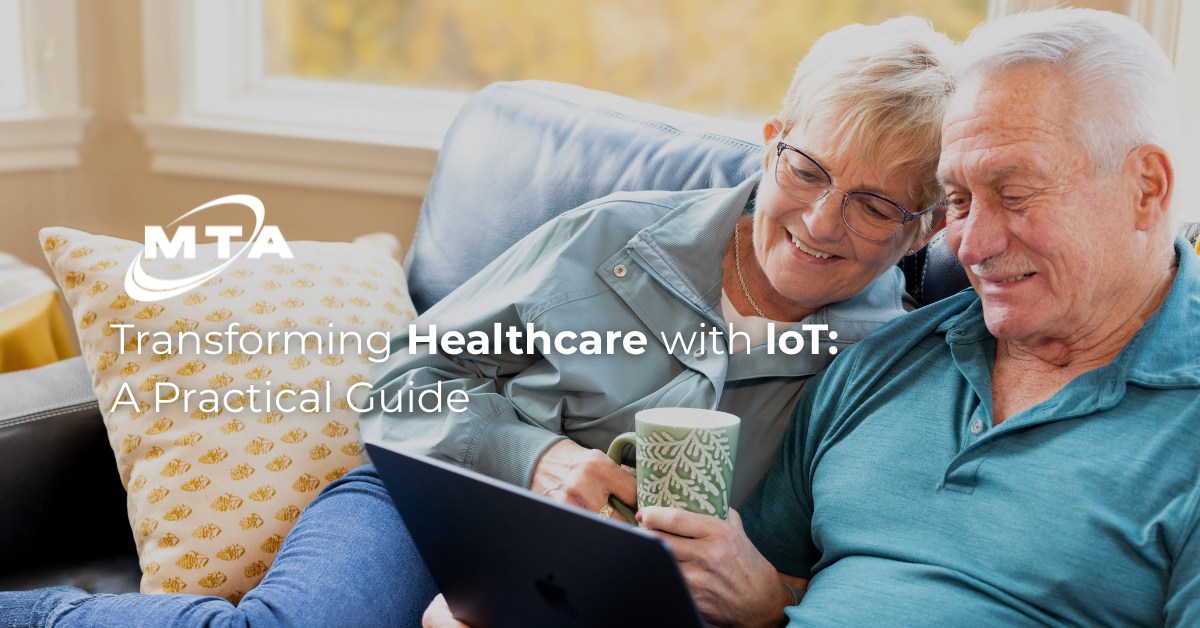
Transforming Healthcare with IoT: A Practical Guide
The Internet of Things (IoT) is changing how healthcare works. By connecting devices and enabling real-time data sharing, IoT is improving patient care and streamlining operations. This is especially important in places like Alaska, where remote healthcare facilities benefit from innovative solutions that overcome unique challenges.
Let’s explore how IoT is reshaping the healthcare industry and why reliable internet is crucial for its success.
Applications of IoT Devices in Modern Medicine
IoT technology is making big advancements in modern healthcare. Whether it’s wearable devices tracking vital signs or smart devices enhancing patient safety, connected medical equipment helps healthcare providers deliver better care.
Wearables for Continuous Health Monitoring
Today’s wearables can constantly monitor key health metrics like heart rate, blood pressure, and glucose levels. Devices like smartwatches and fitness trackers are used for real-time health data collection, giving professionals near-instant insight into patient health conditions. This data helps manage chronic diseases like diabetes and hypertension by enabling precise monitoring of metrics like glucose levels.
For example, continuous glucose monitoring apps paired with wearables provide detailed reports to patients and doctors alike. These tools empower people to take control of their health while improving patient care through uninterrupted monitoring systems.
Smart Sensors for Patient Safety
Smart sensors in hospitals are designed to alert staff during emergencies or monitor high-risk cases like fall detection for elderly patients. IoT-enabled sensors can also monitor breathing patterns or health conditions in real-time, offering an added layer of safety for patients needing constant supervision.
Innovations in smart sensor applications focus heavily on patient safety, ensuring timely medical intervention.
Connected Medical Equipment
IoT-connected medical devices like infusion pumps and ventilators are transforming healthcare systems. These devices send data directly to a central platform, speeding up decision-making processes. For example, imaging equipment integrated with IoT can share medical data and electronic health records instantly across departments, reducing delays in diagnosis.
The Internet of Medical Things (IoMT) ensures clinicians can make data-driven decisions faster, enhancing the functionality of healthcare devices within hospitals or clinics.
Benefits of IoT in Healthcare for Providers and Patients
This new technology offers numerous benefits for both patients and providers. It improves outcomes, boosts efficiency, and creates more personalized approaches to medical care.
- Remote Monitoring of Patients and Telehealth Applications: Remote patient monitoring (RPM) uses IoT to support tele-healthcare services. This is crucial in rural areas like Alaska, where patients might live hours away from the nearest clinic. Wearable devices monitor patients at home, sending healthcare data directly to doctors. This not only reduces hospital readmissions but also simplifies follow-ups for chronic diseases. Learn more about how telehealth reshapes rural healthcare, specifically during the Covid-19 pandemic, in this detailed exploration of IoT benefits.
- Improved Operational Efficiency: IoT in healthcare also drives operational efficiency by streamlining inventory management, resource planning, and workflow processes. Smart IoT platforms in hospitals track medical equipment, helping avoid overstocking or last-minute scrambles during emergencies. These improvements allow healthcare facilities to function more smoothly while saving precious time and money.
Challenges and Limitations of IoT in Healthcare
While the advancements sound promising, IoT healthcare solutions do face some challenges. Security concerns, limited connectivity in remote areas, and the regulatory burden of IoT introduce complications.
- Data Security Risks: With connected devices comes a responsibility to secure patient data. IoT sensors and platforms collect vast amounts of sensitive health information, making them potential targets for cyberattacks. Robust encryption and strong cybersecurity protocols are necessary to protect healthcare data from breaches.
- Connectivity and Infrastructure Limitations: Remote areas without stable internet connectivity struggle to fully adopt IoT healthcare. Patchy Wi-Fi or outdated infrastructure can limit the effectiveness of IoMT devices. For example, hospitals in remote Alaskan towns need dependable internet services to ensure constant data flow across connected devices. A comprehensive review of these limitations and other IoT solutions for healthcare can be found here.
Why Reliable Internet Is Critical for IoT Success
Healthcare organizations relying on IoT need strong, steady internet. Especially for remote facilities, solid connectivity ensures constant engagement between doctors and patients.
IoT-enabled medical devices can transfer large volumes of real-time data quickly, but only if they’re supported by high-speed internet. Low-latency networks are essential for monitoring systems used in telehealth and RPM applications. Without reliable connectivity, IoT sensors and devices lose functionality, which can seriously impact patient care.
How MTA Supports Alaska’s Healthcare Sector
As a leading provider, MTA Alaska offers enterprise internet specifically tailored to healthcare facilities in Alaska. With low-latency broadband and fiber-optic connectivity designed for tough environments, MTA ensures no disruption in daily operations. Their services also include 24/7 technical support, eliminating IT worries for healthcare professionals.
Contact MTA
The IoT is pushing the boundaries of medical care, enabling innovations that make healthcare more accessible, efficient, and personalized. From wearable devices to telemedicine, the possibilities are endless. However, these advancements depend on robust and reliable connectivity.
For Alaskan healthcare providers, partnering with MTA Alaska ensures IoT integrations run seamlessly. Explore services that keep your IoT solutions functioning at their best and elevate your ability to serve patients, no matter where they live.